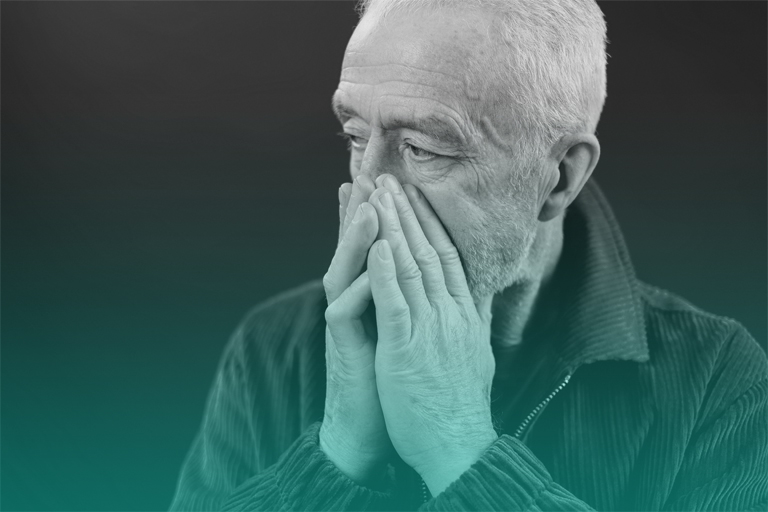
Medically Reviewed by Gaston Molina, Clinical Psychologist & Therapist
Calming Techniques: How to Stop Shaking from Anxiety Immediately

Anxiety is a common mental health condition that affects millions of people worldwide. It can manifest in various ways, including physical symptoms such as shaking. The feeling of uncontrollable trembling can be distressing and disruptive to daily life. In this article, I will explore the connection between anxiety and shaking, and provide immediate techniques to help you stop shaking from anxiety immediately.
What is Anxiety and its Physical Symptoms
Anxiety is a natural response to stress or perceived threats. It is characterized by feelings of worry, fear, and unease. While anxiety is a normal part of life, excessive and persistent anxiety can be debilitating. When anxiety becomes overwhelming, it can trigger physical symptoms, including shaking. These physical symptoms are the body’s way of preparing for a fight-or-flight response.
Shaking or trembling is a common physical symptom of anxiety. It can occur in various parts of the body, such as the hands, legs, or voice. The severity of shaking can vary from mild to severe, and it may be accompanied by other physical symptoms like rapid heartbeat, sweating, or shortness of breath. Understanding the connection between anxiety and shaking is crucial in finding effective techniques to manage and reduce these symptoms.
The Connection Between Anxiety and Shaking
The connection between anxiety and shaking lies in the body’s response to stress. When we experience anxiety, our body’s stress response is activated, releasing stress hormones like adrenaline. These hormones prepare our body for action, increasing heart rate and blood pressure. Shaking is a result of the body’s heightened state of arousal. It is a physical manifestation of the excess energy created by anxiety.
Anxiety can also trigger a feedback loop, where the shaking itself can intensify feelings of anxiety and vice versa. This can create a cycle of anxiety and shaking that is difficult to break. However, by implementing immediate techniques to stop shaking from anxiety, you can interrupt this cycle and regain control over your physical symptoms.
Immediate Techniques to Stop Shaking from Anxiety
When shaking from anxiety strikes, it is important to have immediate techniques at hand to help you regain control and calm your body. Here are some techniques that can provide immediate relief:
Ready to prioritize your mental well-being?
Deep Breathing Exercises to Calm the Body
Deep breathing exercises are a powerful tool to calm the body and reduce shaking caused by anxiety. By focusing on your breath and taking slow, deep breaths, you activate the body’s relaxation response. Start by finding a comfortable position, either sitting or lying down. Close your eyes and take a deep breath in through your nose, counting to four. Hold your breath for a count of four, and then exhale slowly through your mouth, counting to four. Repeat this exercise several times until you feel your body beginning to relax.
Progressive Muscle Relaxation for Anxiety Relief
Progressive muscle relaxation is a technique that involves tensing and relaxing different muscle groups in your body. By systematically tensing and releasing muscle groups, you can release tension and reduce shaking caused by anxiety. Start by sitting or lying down in a comfortable position. Begin with your toes, scrunching them up tightly for a few seconds, and then release. Continue this process, moving up your body to your calves, thighs, abdomen, chest, arms, and finally, your face. As you release tension in each muscle group, visualize the tension leaving your body and being replaced by a sense of calm.
Grounding Techniques to Reduce Shaking
Grounding techniques can help you reconnect with the present moment and reduce shaking caused by anxiety. One effective grounding technique is the 5-4-3-2-1 method. Start by taking a deep breath and then look around your environment. Acknowledge five things you can see, four things you can touch, three things you can hear, two things you can smell, and one thing you can taste. This exercise helps redirect your focus away from anxious thoughts and onto your immediate surroundings, providing a sense of stability and reducing shaking.
Mindfulness and Meditation for Anxiety Management
Mindfulness and meditation are powerful practices that can help manage anxiety and reduce shaking. Mindfulness involves being fully present and accepting of the present moment without judgment. By practicing mindfulness, you can cultivate a sense of calm and reduce the intensity of anxiety symptoms, including shaking. Meditation, on the other hand, involves focusing your attention and eliminating the stream of thoughts that contribute to anxiety. Incorporating mindfulness and meditation into your daily routine can help regulate your emotions and promote relaxation.
Seeking Professional Help for Anxiety and Shaking
While immediate techniques can provide temporary relief, it is important to seek professional help for long-term management of anxiety and shaking. A mental health professional can assess your symptoms, provide a diagnosis, and develop a personalized treatment plan. They may recommend therapy, medication, or a combination of both to address your specific needs. Remember, seeking professional help is a sign of strength, and it can provide you with the necessary tools and support to overcome anxiety and reduce shaking in the long run.
Lifestyle Changes to Prevent Anxiety and Shaking
In addition to immediate techniques and professional help, making lifestyle changes can play a significant role in preventing anxiety and shaking. Here are some lifestyle changes that can help:
- Prioritize self-care: Take time for yourself and engage in activities that bring you joy and relaxation, such as exercise, hobbies, or spending time with loved ones.
- Practice stress management: Identify and address sources of stress in your life. Find healthy coping mechanisms like journaling, talking to a trusted friend, or engaging in stress-reducing activities.
- Get enough sleep: Prioritize quality sleep by establishing a consistent sleep routine and creating a sleep-friendly environment. Lack of sleep can exacerbate anxiety symptoms, including shaking.
- Maintain a healthy lifestyle: Eat a balanced diet, exercise regularly, and limit the consumption of caffeine and alcohol. These lifestyle factors can significantly impact your overall well-being and help reduce anxiety symptoms.
Conclusion
Shaking from anxiety can be distressing, but there are immediate techniques and long-term strategies to manage and reduce these symptoms. By understanding the connection between anxiety and shaking, implementing immediate techniques like deep breathing exercises, progressive muscle relaxation, grounding techniques, mindfulness, and meditation, seeking professional help, and making lifestyle changes, you can regain control over your physical symptoms and live a calmer, more fulfilling life. Remember, everyone’s journey is unique, so be patient with yourself and celebrate even the smallest victories. You are not alone, and there is hope for a brighter, anxiety-free future.
Ready to prioritize your mental well-being?

Medically Reviewed by Gaston Molina, Clinical Psychologist & Therapist
Table of Contents
Need Help?
Get Started

 Let me support you in finding what’s going to keep you going on your journey!
Let me support you in finding what’s going to keep you going on your journey!